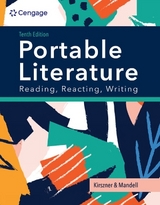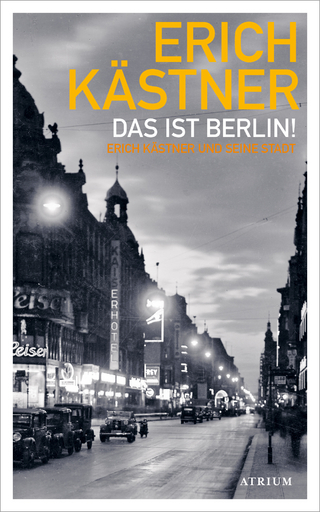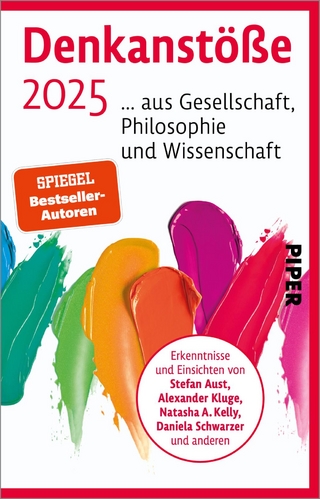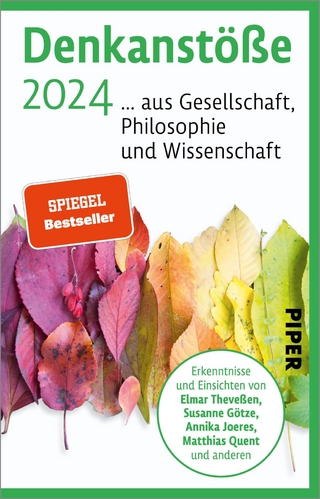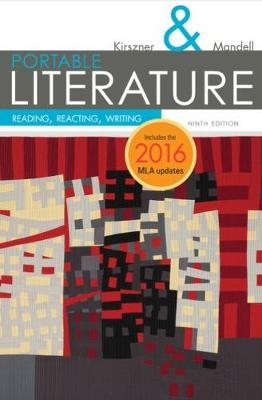
PORTABLE Literature
Wadsworth Publishing Co Inc (Verlag)
978-1-337-28101-0 (ISBN)
- Titel erscheint in neuer Auflage
- Artikel merken
Laurie G. Kirszner is a nationally known, best-selling author. Kirszner and coauthor Stephen R. Mandell have written best sellers for nearly every English market. They have the deepest publishing record of any literature anthology author team and have successfully published up and down the curriculum from developmental to literature. Stephen R. Mandell is a nationally known, best-selling author. Mandell and coauthor Laurie G. Kirszner have written best sellers for nearly every English market. They have the deepest publishing record of any literature anthology author team and have successfully published up and down the curriculum from developmental to literature.
Part I: A GUIDE TO WRITING ABOUT LITERATURE.
1. Reading and Writing about Literature.
Reading Literature. CHECKLIST: Using Highlighting Symbols. Maya Angelou, "My Arkansas." Writing About Literature. CHECKLIST: Using Sources. CHECKLIST: Conventions of Writing About Literature. Exercise: Three Model Student Essays.
2. Writing Literary Arguments.
Planning a Literary Argument. CHECKLIST: Developing an Argument Thesis. Using Evidence Effectively. Organizing a Literary Argument.
3. Documenting Sources and Avoiding Plagiarism.
Avoiding Plagiarism. CHECKLIST: Avoiding Unintentional Plagiarism. Documenting Sources. CHECKLIST: Guidelines for Punctuating Parenthetical References.
Part II: FICTION.
4. Understanding Fiction.
Origins of Modern Fiction. Defining the Short Story. Ernest Hemingway, "Hills Like White Elephants." The Boundaries of Fiction.
5. Fiction Sampler: The Short-Short Story.
Julia Alvarez, "Snow." Amanda Brown, "Love and Other Catastrophes: A Mix Tape." Lydia Davis, "Television." Dave Eggers, "Accident." Bret Anthony Johnston, "Encounters with Unexpected Animals." Stephen Graham Jones, "Discovering America." Jamaica Kincaid, "Girl." Ed Park, "Slides to Unlock." George Saunders, "Sticks."
6. Fiction Sampler: Graphic Fiction.
Max Brooks, from "The Harlem Hellfighters." Marjane Satrapi, from "Persepolis." Art Spiegelman, from "Maus." Gene Luen Yang, from "American Born Chinese."
7. Plot.
Conflict. Stages of Plot. Order and Sequence. CHECKLIST: Writing about Plot. Kate Chopin, "The Story of an Hour." Neil Gaiman, "How to Talk to Girls at Parties." William Faulkner, "A Rose for Emily." Dick Pothier and Thomas J. Gibbons Jr., "A Woman's Wintry Death Leads to a Long-Dead Friend."
8. Character.
Round and Flat Characters. Dynamic and Static Characters. Motivation. CHECKLIST: Writing about Character. John Updike, "A&P." Katherine Mansfield, "Miss Brill." Charles Baxter, "Gryphon." Zadie Smith, "The Girl with Bangs."
9. Setting.
Historical Setting. Geographical Settings. Physical Settings. CHECKLIST: Writing about Setting. Kate Chopin, "The Storm." Sherman J. Alexie, "This Is What It Means to Say Phoenix, Arizona." Tillie Olsen, "I Stand Here Ironing."
10. Point of View.
First-Person Narrators. Third-Person Narrators. Selecting an Appropriate Point of View. CHECKLIST: Selecting an Appropriate Point of View: Review. CHECKLIST: Writing about Point of View. Richard Wright, "Big Black Good Man." Edgar Allan Poe, "The Cask of Amontillado." William Faulkner, "Barn Burning." Edwidge Danticat, "New York Day Women."
11. Style, Tone, and Language.
Style and Tone. The Uses of Language. Formal and Informal Diction. Imagery. Figures of Speech. CHECKLIST: Writing about Style, Tone, and Language. James Joyce, "Araby." (Mary) Flannery O'Connor, "A Good Man Is Hard to Find." Tim O'Brien, "The Things They Carried."
12. Symbol, Allegory, and Myth.
Symbol. Allegory. Myth. CHECKLIST: Writing about Symbol, Allegory, and Myth. Shirley Jackson, "The Lottery." Alice Walker, "Everyday Use." Raymond Carver, "Cathedral." Nathaniel Hawthorne, "Young Goodman Brown."
13. Theme.
Interpreting Themes. Identifying Themes. CHECKLIST: Writing about Theme. Eudora Welty, "A Worn Path." David Michael Kaplan, "Doe Season." D(avid) H(erbert) Lawrence, "The Rocking-Horse Winner." Robert Huff, "Rainbow."
14. Fiction for Further Reading.
T. Coraghessan Boyle, "Greasy Lake." Charlotte Perkins Gilman, "The Yellow Wallpaper." Lorrie Moore, "Referential." Joyce Carol Oates, "Where Are You Going, Where Have You Been?" Alberto Alvaro Rios, "The Secret Lion." Amy Tan, "Two Kinds." Tobias Wolff, "Bullet in the Brain."
Part III: POETRY.
15. Understanding Poetry.
Marianne Moore, "Poetry." Pamela Spiro Wagner, "How to Read A Poem: Beginner's Manual." Origins of Modern Poetry. Defining Poetry. William Shakespeare, "That time of year thou mayst in me behold." E.E. Cummings, "l(a)." Recognizing Kinds of Poetry.
16. Voice.
Emily Dickinson, "I'm nobody! Who are you?" The Speaker in the Poe
| Erscheinungsdatum | 22.09.2016 |
|---|---|
| Verlagsort | Belmont, CA |
| Sprache | englisch |
| Maße | 138 x 39 mm |
| Gewicht | 794 g |
| Themenwelt | Literatur ► Anthologien |
| ISBN-10 | 1-337-28101-8 / 1337281018 |
| ISBN-13 | 978-1-337-28101-0 / 9781337281010 |
| Zustand | Neuware |
| Haben Sie eine Frage zum Produkt? |
aus dem Bereich
